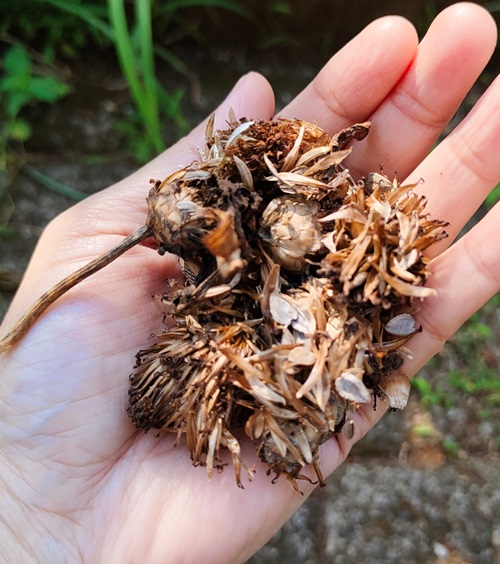Stop ruining your seeds! Here are Mistakes to Avoid When Saving Zinnia Seeds This Fall for a garden filled with bright spring blooms.
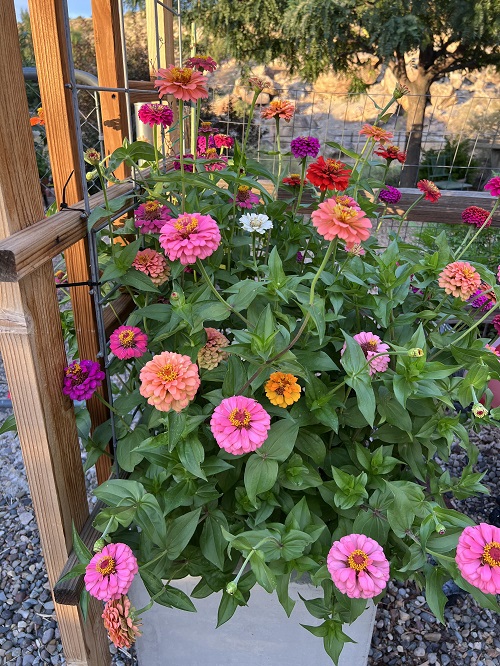
Zinnia elegans are brilliant-hued annuals that are super easy to grow, lure swarms of butterflies, and self-seed prolifically. But even experts often miss a few subtle steps that mess up future flowers—here are mistakes to avoid when saving zinnia seeds this fall!
Mistakes to Avoid When Saving Zinnia Seeds This Fall
1. Not Researching the Variety
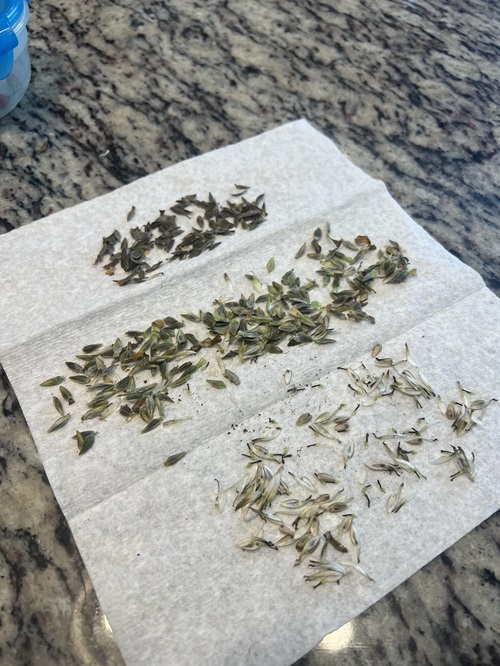
This doesn’t apply if you already have a zinnia from which you’ll collect seeds. However, if zinnias are a fresh face to add to your garden, make sure you know the variety you’ll be working with; information’s usually available on the seed packets.
For better success, pick open-pollinated heirloom zinnia varieties like California Giant and Lilliput. Certain hybrids or mixes like State Fair Mix, Candy Cane, and Thumbelina Dwarf Mix also work, as they are bred for better resistance, taller, bigger blooms, etc.
However, heirloom varieties have more genetic diversity, are more resistant to pests, can adapt easily to changing conditions, and germinate better. And since they naturally pollinate with wind, insects, and birds, they are better suited to enhance biodiversity.
Hybrids, on the other hand, are strictly grown for specific characteristics, and their seeds may not always be viable. They may also not grow true to their parent plants and have lower germination rates.
2. Deadheading All Spent Flowers
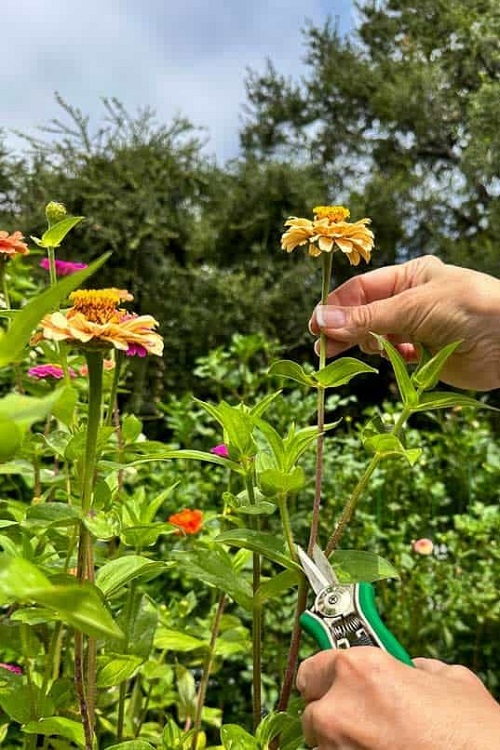
Do not deadhead all spent zinnia blooms if you want to save seeds for the next season! As summer fades into fall, it does get tempting to “clear out” dead bits, especially the droopy colorless flowerheads. But you need them for seeds—so resist!
Brown, brittle flower heads signal that seeds have matured and are ready for harvest. However, you don’t need all the dead flowers. Just keep a few dry blooms that are out of obvious sight—for a successful seed harvest—and deadhead the rest to tidy up.
3. Unable to Identify Zinnia Seeds
How can you harvest if you don’t know what to look for? If you’re harvesting zinnia seeds for the first time, you must familiarize yourself with how they look and where exactly to find them!
Whether the petals are fully brown or retain some color, focus on the flower heads, as this is where the seeds develop. Zinnia seeds are typically arrow-shaped and should be completely brown when mature, indicating they’re dry and ready for collection.
4. Harvesting Seeds Too Early or Too Late
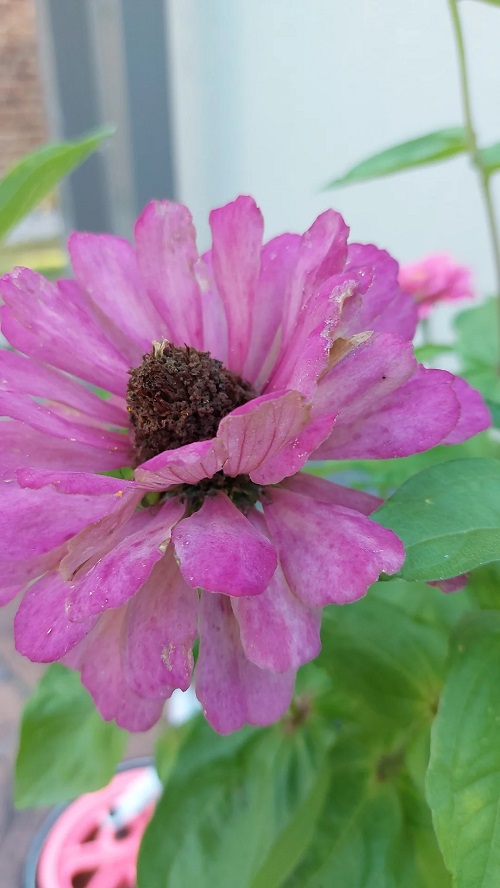
Bad timing is another mistake to avoid when saving zinnia seeds. Timing is critical, and fall is ideal, but the exact “when” depends on your hardiness zone and the zinnia variety. Once you learn to do this, you are well on your way to securing never-ending zinnia blooms.
Harvest seeds before the first frost, ensuring the flower heads are dry and brown. Frost could damage the seeds left on the plant, especially if left too long. And those harvested too early may not be viable. If frost is imminent and seeds are not mature enough, consider cutting the flower heads early and drying them indoors.
Pro Tip: You don’t always have to harvest the seeds; here are other ways to propagate your zinnia plants.
5. Choosing the Wrong Day For Seed Collection
Yes, there is a “wrong day” when saving zinnia seeds in the fall! A day when there is too much mist and dew drops collect on the plant and wet the seedheads is a mistake you must avoid. Pick a dry, sunny day instead; any residual moisture would have evaporated.
This helps with better germination; dry conditions also make pulling off the petals and accessing the seeds easier.
6. Not Letting the Seeds Dry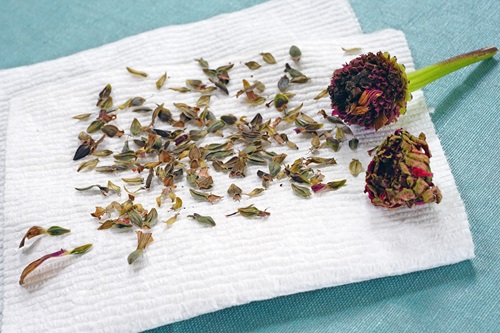
Once harvested, allow the seeds to dry out completely. Moist seeds can develop mold or rot, ruining them. The best way to let seeds dry is to spread them on a screen or a sand sifter in a cool, dry area.
Ensure good airflow and avoid placing the seeds near fans or vents where they might blow away. Let them dry like this for 3-4 days to ensure they are fully ready for storage.
7. Chaotic Seed Labels
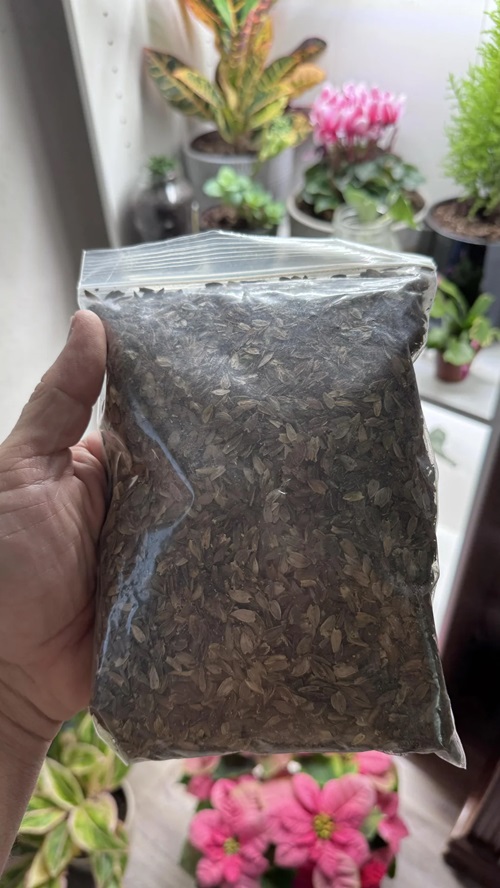
Being organized is half the work in gardening and seed-saving. If you’re harvesting from multiple varieties, keep them separate and label them clearly. Even if you’re saving seeds from just one variety, jot down the name and harvest date on the envelope.
Proper labeling will allow you to sow seeds at the right time without expiry, as Zinnias are best viable for 2-3 years. Here are tricks to find out if your seeds will germinate!
8. Poor Storage
The final top mistake to avoid when saving zinnia seeds is poor storage. The best way to store seeds is in paper envelopes or brown paper bags, as they allow seeds to breathe. Avoid plastic, as it traps moisture and encourages sweating.
Seeds should be stored in a cool, dry place away from direct sunlight, as moisture can kill their chances of germinating. A seed tin in a cool closet works well and you can keep them viable for 3-4 years if stored properly.
Remember to avoid these silly mistakes this fall, and your saved zinnia seeds will reward you with abundant and bouncy spring and summer blooms!


